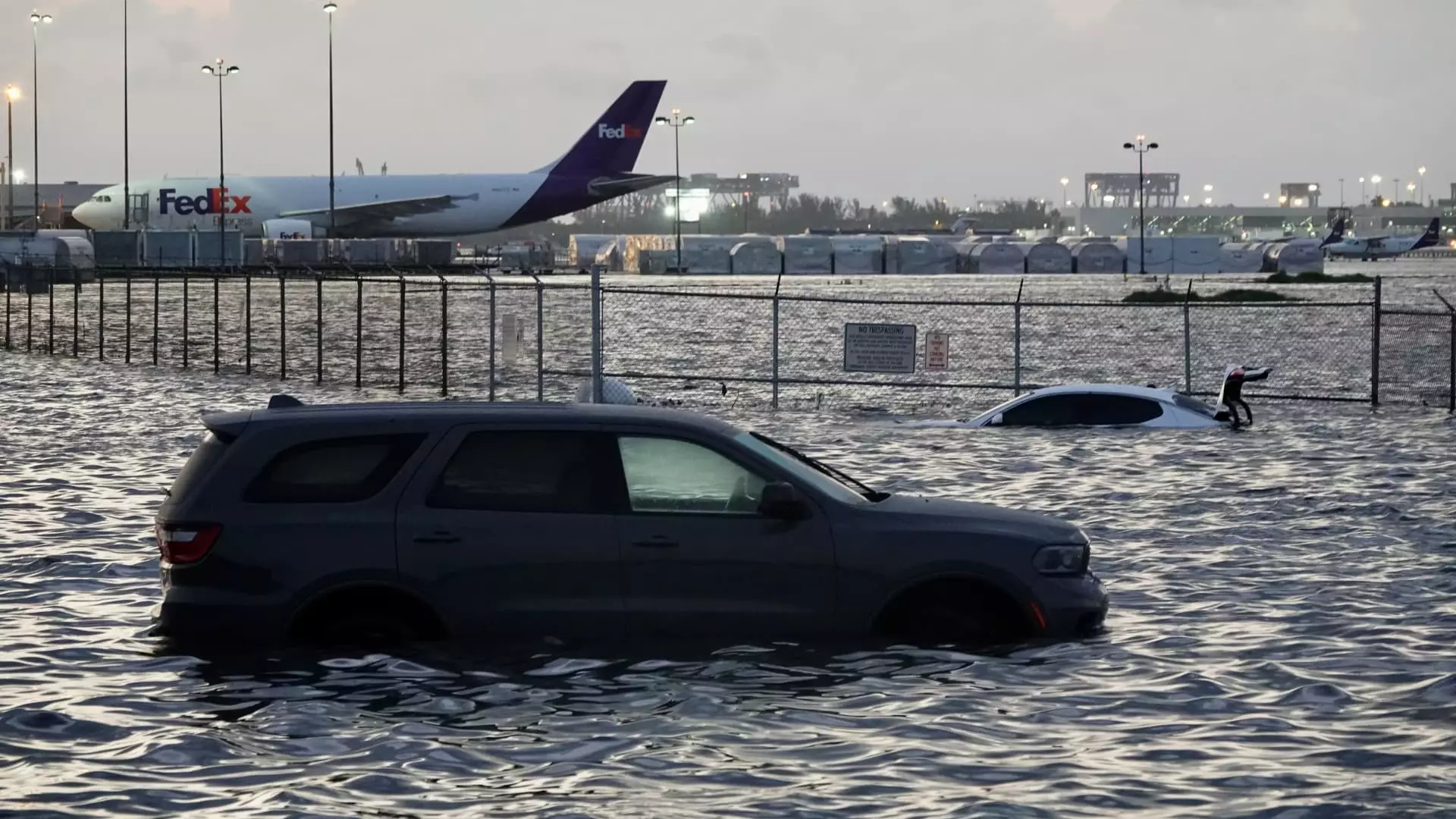In the heart of a nation built on innovation and resilience, America’s infrastructure appears to be faltering under the relentless weight of climate change. The reality is stark: our bridges, airports, power grids, and telecommunications — once symbols of progress — are increasingly vulnerable, compromised by a climate that no longer follows historical patterns. The latest reports reveal a sobering truth: our infrastructure is barely holding together, often unprepared for the increasingly severe weather events that science has forecasted for years. This is a crippling paradox for a country that prides itself on technological leadership and pioneering spirit.
The impacts are vividly tangible: flooding at major airports causing chaos and stranded travelers, bridges failing to withstand summer heatwaves, and power outages worsened by wildfires and storms. These aren’t isolated incidents but part of a disturbing trend that highlights the critical gaps in our planning, investment, and foresight. Our aging infrastructure, designed for a climate that has fundamentally shifted, is now a ticking time bomb. The American Society of Civil Engineers’ recent assessment gave the nation a bleak “C” grade—proof that we are failing to meet the challenges posed by our warming planet.
Systemic Neglect and the Cost of Inaction
The root of the problem is not merely the physical deterioration of structures but a systemic disregard for adaptability and resilience in policy and investment. Many of these critical infrastructures were built decades ago, using outdated standards that assumed a relatively stable climate. These structures are now exposed to the full fury of weather extremes, rendering them obsolete or outright dangerous. Floods, wildfires, and heatwaves are no longer rare events but part of the new normal, and our infrastructure is barely keeping pace.
The economic ramifications are equally alarming. A recent analysis by CNBC’s First Street reveals that nearly 20% of U.S. power infrastructure and over 12% of airports face significant risks from natural disasters. The financial stakes are enormous; without urgent and substantial investment, we risk perpetuating a cycle of costly repairs, loss of productivity, and even dangerous failures. The threat extends beyond physical damage—investors are increasingly cautious, questioning the longevity and viability of their holdings and contemplating whether to reorient their strategies around climate resilience.
Yet, despite these urgent realities, political momentum appears insufficient. Budget cuts, such as those aggressively pursued during the Trump administration, have decimated agencies essential for climate science and infrastructure resilience—NOAA, FEMA, and other critical institutions. These cuts threaten to erase decades of progress, leaving the nation without robust scientific guidance needed to adapt to a swiftly evolving climate crisis.
The Science-Policy Gap and the Need for Strategic Reforms
There is a glaring disconnect between scientific consensus and policy action. Experts like Sarah Kapnick articulate how foundational science should inform infrastructure design — a matter of public health, safety, and economic stability. However, science is under relentless attack, with funding cuts and political hostility hampering efforts to comprehend and address climate risks effectively.
This underinvestment reflects a broader societal failure to prioritize resilience and sustainability. The $3.7 trillion gap in infrastructure funding over the next decade signals not just neglect but a deep-seated failure to recognize the stakes involved. Our response must shift from reactive repairs to proactive planning. We need innovative, scientifically grounded strategies that integrate climate projections into engineering standards, urban planning, and resource allocation.
Left unchecked, these issues threaten to destabilize the very foundations of national infrastructure, exacerbating social inequalities and undermining economic stability. We cannot afford to ignore the warning signs nor delay action any longer. Investing in climate-resilient infrastructure is no longer optional but an urgent moral and economic imperative — to protect future generations and restore confidence in America’s ability to withstand the mounting storms ahead.

